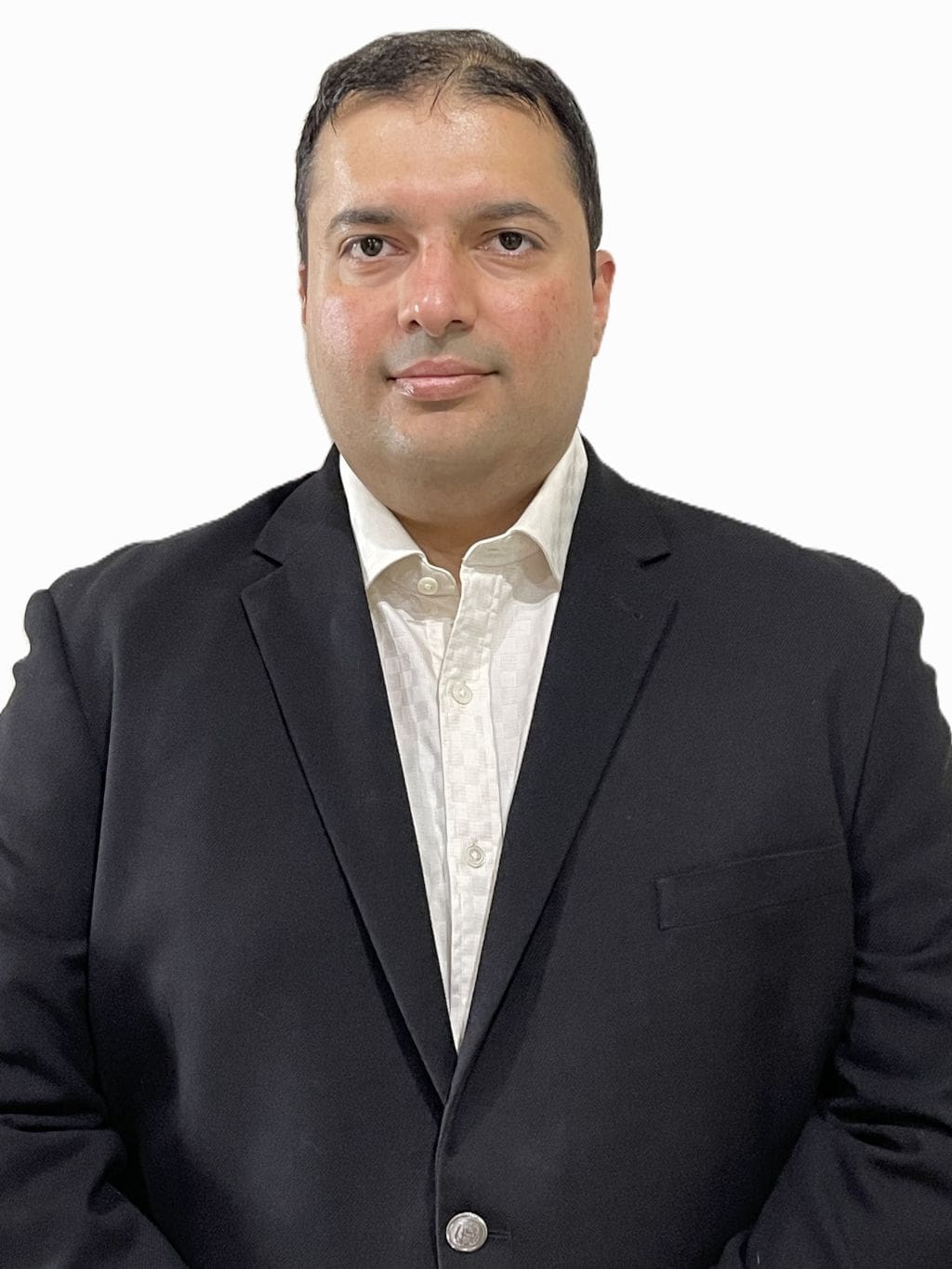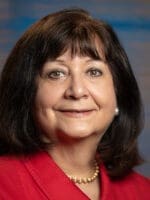Ellen Warren: Gautam, over the past two decades, your career has encompassed the full spectrum of technical and business roles in the oil and gas (O&G) industry in the U.S. and abroad. Tell us about your background and how you came to your current position in Corporate R&D at NOV.
Gautam Swami: Our amazing industry has provided me with many professional opportunities, starting in oilfield operations, moving to Project Management in shipyards, New Product Development, Low Carbon Technologies, and most recently in Corporate R&D. Working in both Project and Product Management has given me unique insights into the challenges that global corporations face. My Bachelor of Petroleum Engineering degree provided me with a solid career in Asia, the Middle East, and the Far East. Moving to the U.S. for my graduate degrees, after gaining more than a decade of professional experience, opened new vistas of professional growth for me. All in all, I have been fortunate to find positions that leverage my combined education and experience to deliver complex products, growth strategies, and financial analyses.
EW: From financial and operational standpoints, how do you assess whether an emerging technology is worth moving from pilot phase to full-scale launch across NOV’s global customer base?
GS: Our robust processes utilize several checks and balances to ensure that we translate ideas into profitable solutions. Financial metrics typically include revenues, profit margins, Net Present Value (NPV),

Internal Rate of Return (IRR) and profitability ratios. Typical financial models comprise Balance Sheet, Income Statement, Cash Flow Statement, revenue forecasts, buyer considerations, sensitivity analyses, royalties, tax credits, and leverage. We also use appropriate frameworks to gauge potential demand, pricing, revenue, and profit of an emerging technology.
Operationally, some of the key questions we ask ourselves are time-to-first revenue, costs associated with going from idea to commercial launch, prevailing market sentiments, target markets, and the set of options that would deliver a fair share of the target market.
EW: In 2023, NOV demonstrated an industry-first by relocating the Driller’s Cabin from the rig-floor of its test rig to the ground, at the Springett Technology Center (STC) in Texas. The goal was to increase safety by leveraging automation and robotics, which are essential to creating a “manless” rig floor. What was your role in this, and how has this innovation advanced in the last two years?
GS: Moving drill-floor personnel away from harm’s way could potentially become a new paradigm for our industry. That relocation at STC was a great testament to our continuous technology development efforts. Some of these technologies were conceptualized and matured using the “Stage-Gate Process” during my time as New Product Development Manager. Our drilling automation and robotics technologies are delivering higher safety levels and improved productivity. Such innovation requires a long-term commitment, and many systems must be integrated to provide drilling crews with the timely and accurate insights they need. Overall, leveraging innovation to serve industry needs has always yielded positive results.
EW: Moving the Driller’s Cabin is an innovation that could be transformative for the O&G industry. Can you share any other projects you are currently working on that are leveraging automation technologies in equally impactful ways for drilling operations?
GS: We are evaluating designs that combine many of our established products and systems into cutting-edge packages. Our focus on standardized designs, which aid fabrication, and deep global relationships are enabling the adoption of new systems. Intelligent control systems, advanced material handling equipment, and remote monitoring solutions are being integrated into existing equipment and controls, seamlessly. Automation technologies are optimizing more functions to reduce operating costs. Ultimately, combining automation and data integration is demonstrating higher safety levels and delivering more consistent drilling outcomes. As always, our core ethos of continually adding safety enhancements and ensuring a competitive total cost of ownership guides our thinking.
EW: Your company is recognized as a global leader in technical innovation across all areas of the O&G industry. How are you involved in developing leading-edge A.I. solutions? Are you working in any specific organizational or engineering areas?
GS: My current role has a very broad scope, which requires me to balance long-term growth potential with short-term pragmatism. The potential to scale efficiency gains across product lines keeps us on our toes, and integrating systems across platforms can be complex and time-consuming. We are evaluating Generative Artificial Intelligence (AI) solutions for forecasting, and Agentic solutions for faster decision-making and higher accuracy. The use cases range from improving operational safety to optimizing workflows. Many of these projects build on our existing drilling optimization capabilities. Our complex solutions evaluate potential risks in real-time, and step in to mitigate those risks based on pre-set tolerance levels. Hence, we try to be globally attuned, yet locally competitive in our innovation projects.
EW: What other use cases are you evaluating for A. and automation tools? Can you share any metrics to show how these new technologies are enhancing efficiency and profitability?
GS: We are studying many Generative and Agentic solutions to lower marginal costs and increase marginal revenues. In drilling operations, we endeavor to reduce the Total Reportable Incident Rates (TRIR) and increase the Rate of Penetration (ROP) and hours on bottom. Other applications optimize weight on bit (WOB) and revolutions per minute (RPM), which ultimately result in achieving target depths within planned budgets and program durations.
Over time, our internal functions could also benefit from Agentic solutions. Metrics for those solutions could potentially include reduction in errors and faster turnaround times. While the impact of these solutions is yet to be quantified, initial results have been very encouraging.
EW: As AI and automation become more deeply embedded in field operations, what strategies are you using to manage change at the human level — particularly in ensuring workforce readiness and acceptance?
GS: Being a technology company ourselves, we have employed AI for more than a decade in our product development efforts. Our excellent engineers and scientists are experts in various technical disciplines, and have added a layer of AI skills to their repertoire through dedicated efforts and financial investments. Many of us have undergone technical and management training to build deep organizational capabilities, and the most recent example of our commitment is the rollout of a Generative Pre-trained Transformer (GPT) service. This rollout includes training content for co-working tools to improve accuracy and increase throughput. Members of our team are naturally curious, and our focus on delivering sustained competitive advantages is the perfect motivator to adopt new strategies and tools. We are also leveraging the tailwind of falling prices for computing and cloud technologies to test more use cases that could deliver savings and efficiency gains.
EW: R&D programs involve testing innovations before taking products to market and showcasing emerging technologies to potential customers. How is your R&D work driving improvements?
GS: Potentially disruptive technologies need extensive testing and certification, and our R&D locations worldwide accelerate the pace of deployment. Improving performance without increasing complexity during live operations is a two-pronged challenge, which we strive to meet. Extensive testing and simulation enable us to iterate and fine-tune equipment packages and improve operational safety. We are exploring how to synchronize advanced systems with human operators’ reflexive motions. These tests will drive the adoption of safety-enhancing systems that leverage cameras, data integration, and power management. Incorporating “human-in-the-loop” workflows to ensure greater transparency between operating sites and control locations could also improve overall performance.
EW: How do you adapt your R&D strategy to respond to potential supply-chain constraints, geopolitical risks, and energy market volatility?
GS: In R&D, exploratory projects usually need just a few inputs to build a prototype. We rely on the deep expertise of our suppliers to suggest appropriate material sources and specifications. Having multiple options for key inputs is critical to continuous innovation. We aim to ensure that our initial designs are compatible with potential manufacturing and operational considerations further along in the development process. While short-term input-price volatility does impact us, we focus on leveraging our global footprint to overcome temporary challenges. We monitor commodity prices closely and strive to capitalize on the industry’s growth trends in both capital expenditures (CapEx) and operating expenses (OpEx) programs at various stages of the commodity price cycle.
EW: Within your broad scope, where do you see the greatest opportunities? The greatest challenges? What are your current priorities for R&D?
GS: As the energy intensity of Developing Nations’ Gross Domestic Product (GDP) increases, R&D can play a critical role in developing fit-for-purpose products for price-sensitive markets. In the near term, innovations in exploration will be critical to meeting the growing demand for affordable and reliable energy worldwide. The absorption of new technologies will increase in tandem with an increase in Final Investment Decisions (FIDs) for large international projects.
The United States’ crude oil production rate went from roughly nine million barrels of oil per day to more than 13 million barrels per day over the past decade. That fifty percent increase is emblematic of the critical contributions of R&D efforts. While individual products can have localized impacts, the industry’s large-scale deployment of platform-based solutions at the fleet level has been the key driver of improvements.
Leveraging the O&G industry’s fungible expertise to new markets like geothermal energy and carbon capture are exciting opportunities. However, they have their own challenges like high input costs, and deeply embedded systemic efficiencies of incumbent ecosystems. We are addressing some of these challenges by active cross-sectoral collaboration.
EW: Your academic background includes a Bachelor of Petroleum Engineering degree and two Graduate degrees from Tulane University – a Master of Management in Energy and an MBA, and professional certifications in topics such as A.I. and risk analysis. You are also a Lifetime Member of the Society of Petroleum Engineers (SPE). How does combining your energy and business expertise contribute to your role in R&D?
GS: Given the complex nature of innovation, we benefit from multi-disciplinary expertise when developing business cases for new products. I often use a combination of both engineering and finance disciplines while modeling investments and returns in new technology.
Learning about new technologies ensures that we bridge innovators’ ambitions and end-users’ expectations successfully. Professional societies are an excellent source of expert advice, historic literature, and inspiring personal journeys. SPE’s members can always be counted on to open doors, contribute to technical papers, and share deep regional insights through conferences and exhibitions. I am constantly surprised by the generosity of SPE members and am happy to pay their kindness forward.
Ellen F. Warren writes about industry leaders and trends in various sectors, including energy, fintech, IT innovation, healthcare, business, logistics, supply chain, commercial real estate, and entrepreneurship.As a former Independent Director, she served for more than a decade on the Boards of multiple E&P companies in the oil and gas industry.






